
Emperor Napoleon
La Grand Armee
60,960 inf
8,320 cav
120 artillery
BATTLE OF REHFELD
JUNE 21st, 1811

General Yorck
Army of the Elbe
111,840 infantry
16,640 cavalry
120 artillery
|
60,960 inf |
BATTLE OF REHFELD JUNE 21st, 1811
|
111,840 infantry |
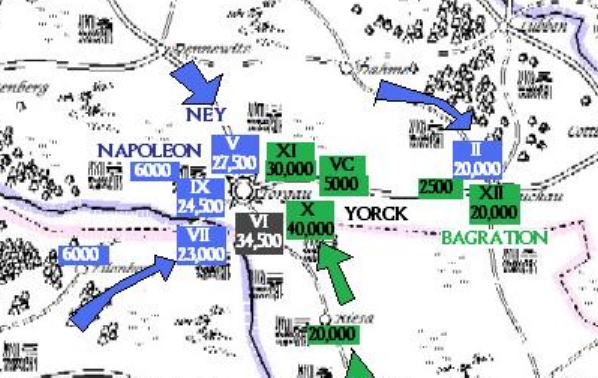 Following
the conquest of Berlin on the 15th of June, Napoleon's Grand Armee pauses,
waiting in their battalion carre for the anticipated Prussian counter-attack to
retake Berlin, but it does not appear to come. Blucher remains with twenty
divisions at Magdeburg fortress and then, just days after the battle of Meissen,
French vedettes begin to report a build up of Prussian forces at Torgau
fortress. By the 19th, the reports are of twelve divisions there. If he is going
to get a battle before the Austrians arrive in theater, Napoleon is going to
have to attack. Ney gets the order to march south from Dennewitz while
Bernadotte crosses the Elbe from Eilenberg. Unknown to Napoleon, the Prussians
have made contact with Bagration's Russian Army and the two are moving to Torgau
in anticipation of an eventual combined drive on Berlin. The army that the
coalition can mass at Torgau would double that of the French. General
Bagration would become engaged at Luckau with Ney's II Corps so Yorck would take
command of the combined Russian-Prussian army.
Following
the conquest of Berlin on the 15th of June, Napoleon's Grand Armee pauses,
waiting in their battalion carre for the anticipated Prussian counter-attack to
retake Berlin, but it does not appear to come. Blucher remains with twenty
divisions at Magdeburg fortress and then, just days after the battle of Meissen,
French vedettes begin to report a build up of Prussian forces at Torgau
fortress. By the 19th, the reports are of twelve divisions there. If he is going
to get a battle before the Austrians arrive in theater, Napoleon is going to
have to attack. Ney gets the order to march south from Dennewitz while
Bernadotte crosses the Elbe from Eilenberg. Unknown to Napoleon, the Prussians
have made contact with Bagration's Russian Army and the two are moving to Torgau
in anticipation of an eventual combined drive on Berlin. The army that the
coalition can mass at Torgau would double that of the French. General
Bagration would become engaged at Luckau with Ney's II Corps so Yorck would take
command of the combined Russian-Prussian army.
Yorck, seeing his superiority in numbers, would look on this as an opportunity to deal a crippling blow to Napoleon. He elected to deploy his army five miles to the east of Torgau, at Rehfeld, where the field was fairly featureless so that the French could not defend in terrain. Napoleon advanced to engage. The coalition plan was to engage the French aggressively on a narrow frontage, looking to wear the enemy down by attrition and combined arms attacks. The Prussians, in a massive corps of twenty-one brigades, would be the right flank. Constantine (twenty brigades) would take the Russians on the left and the Russians cavalry (acting under Yorck's command since their corps commander was engaged at Luckau) would function in support of them.
The French army consisted of three balanced Corps with IX corps being composed of veteran soldiers. Napoleon's plan was to hold against the anticipated aggressive assault by the Prussians and, in particular, to mass a grand battery against them. After 1300 hours, IX Corps would launch an assault through the grand battery and strike at the heart of the Prussian Corps. It was anticipated that Bernadotte would be hard pressed.
Marshal Ney was sent to command the right wing and ensure that Bernadotte did not stray too far from his assigned mission.
Throughout the day, a steady rain would fall that would reduce the effectiveness of infantry muskets.

The French massed batteries achieve early successes, damaging or destroying almost all of the Prussian artillery.
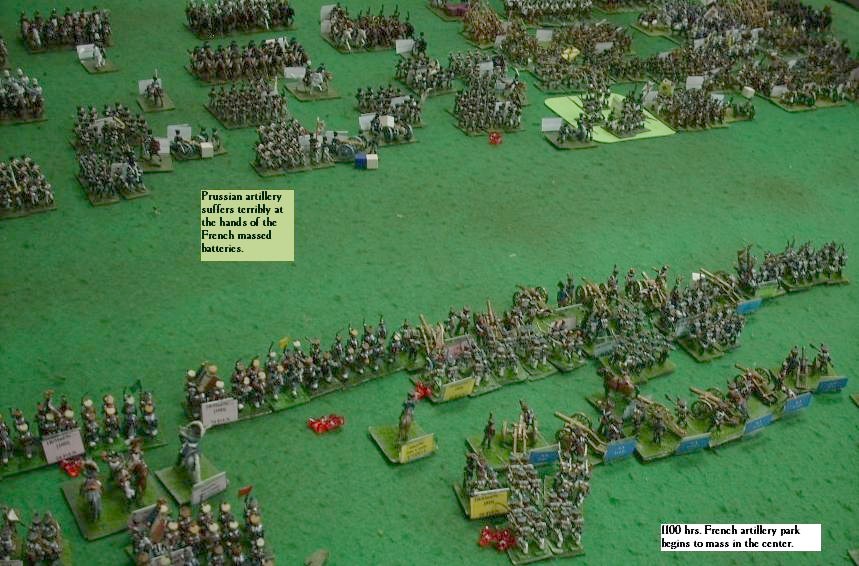
Buxhowden's XI Corps marches has forced march north from Meissen and Riesa to arrive as timely reinforcements on the Allied left flank. His march would be slower than Yorck would have liked.
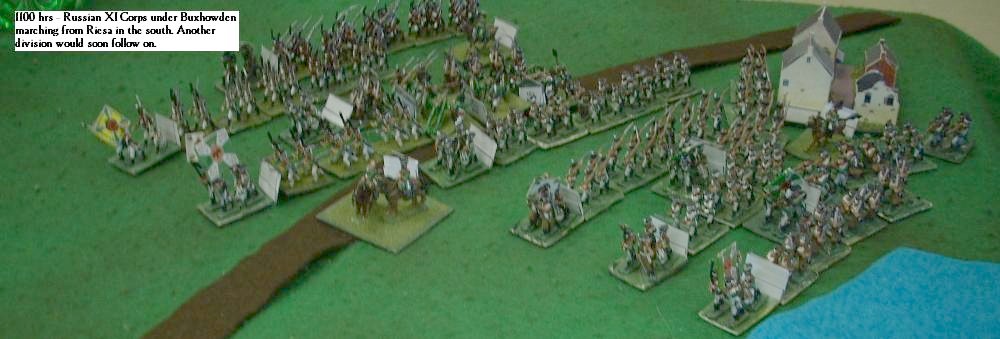
Prussians quickly establish a pattern of combined cavalry and infantry attacks against the front of the French formations. Some of these would achieve the desired effect and several French brigades would be routed but many of them would fail due to French fortune and firepower. There would be dozens of these attacks throughout the battle.
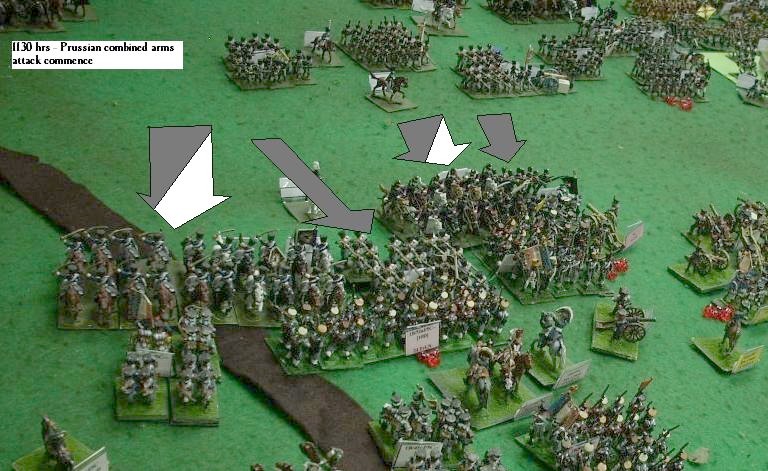
With the artillery park of the Grand Armee preparing to unlimber to combine to form a frighteningly large massed battery, Yorck determined that he has no option but to order Thielmann's corps forward into desperate charges into the teeth of the guns before they can be fully deployed. At terrible cost, several French cannon are lost but the Grand Battery is broken up and Napoleon does not try to form it again, instead option to spread the guns out across his front. On the right flank, the Russians had achieved total artillery superiority so some guns would be sent to Bernadotte's aid.
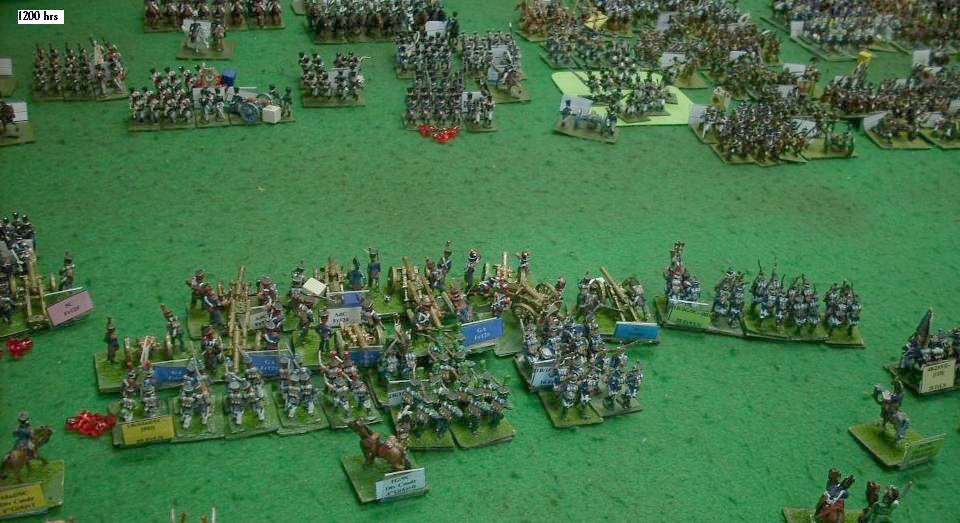
By 1230 hrs. the French line remains firm, having not been dented or driven back by the coalition attacks. Some French brigades have been routed back but there is enough depth to cover the temporary losses. Buxhowden remains a couple of hours from engagement.
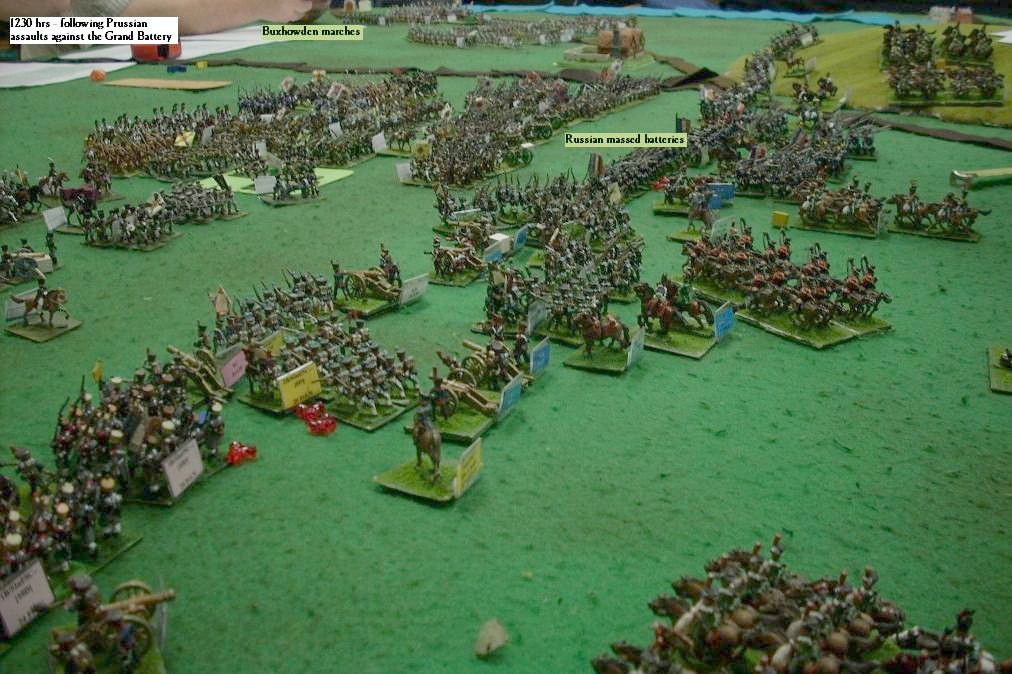
The repeated combined arms attacks, in conjunction with the firepower of the French artillery, has worn out Thielmann's infantry. There is still a strong cavalry presence but the balance has clearly shifted.
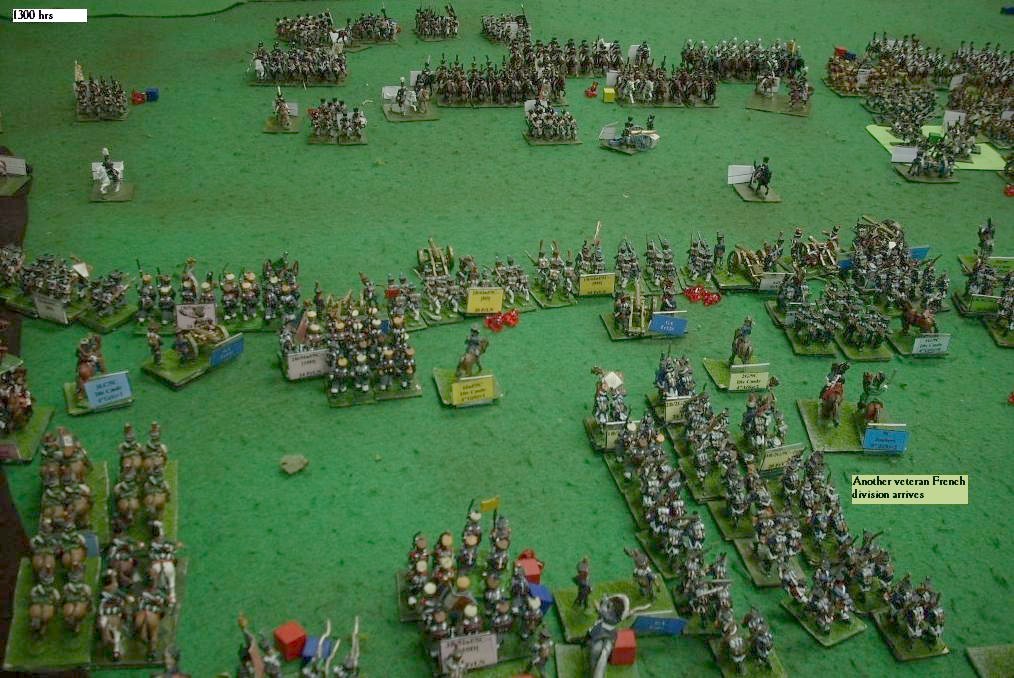
At 1330 hrs, Napoleon orders the veteran corps to go onto the attack and though they cannot all yet go forward, what does advance achieves brilliant results. Thielmann's Corps will continue to fight with tenacity but they are no longer an attacking force and are now fighting for survival.
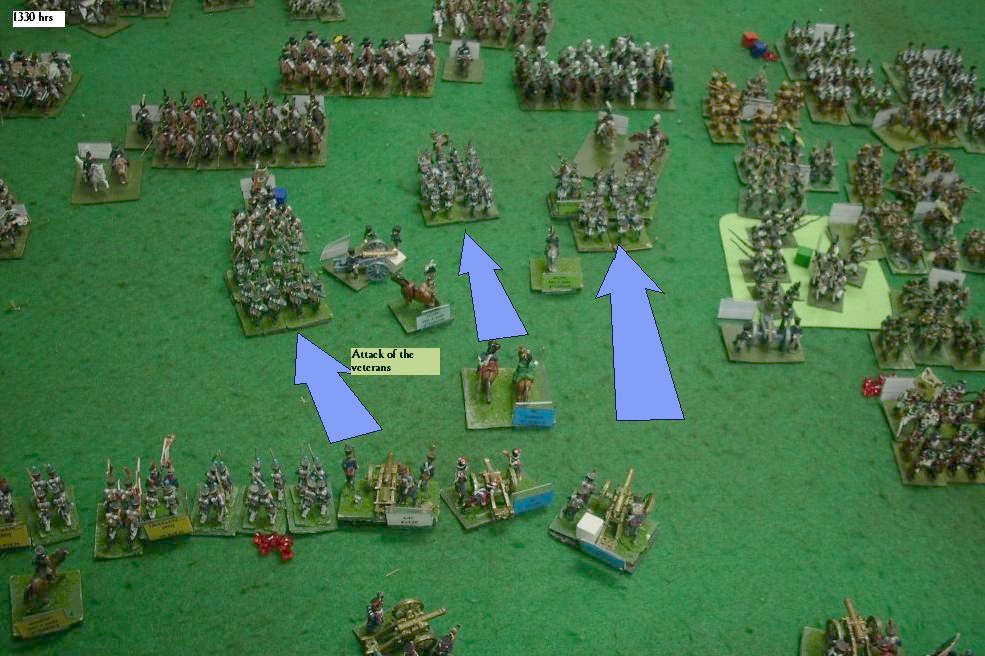
On the French right, Ney leads an attack to drive in the left corner of Constantine's massive formation. Limited successes are gained but they are not enough, with the weight of Buxhowden nearing. It should be noted that fully half of Constantine's Corps is militia and that mass of conscript infantry would continue to get in the way of the Russian cavalry that tried to support their compatriots.
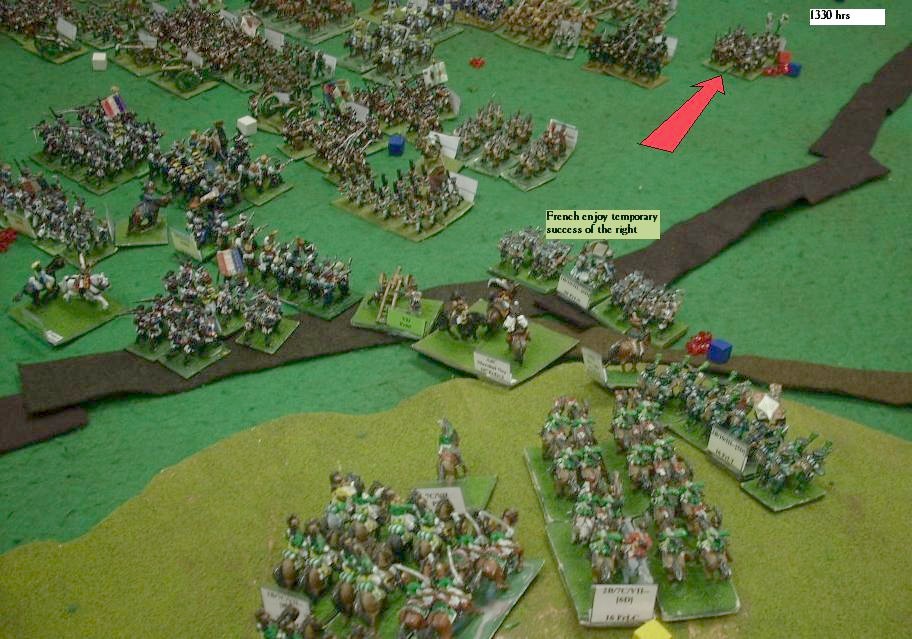
Buxhowden attacks through Anzberg in time to stabilize Constantine's left. As well, two columns of Grenadiers would climb the hill and close with French light infantry. One Grenadier column would be routed but the other would succeed in pressing back the voltigeurs. Before Constantine's artillery, two brigades of French would be obliged to form square and due to the volume of close range artillery fire hitting them, they would be unable to change their formations and one would be dispersed by fire.
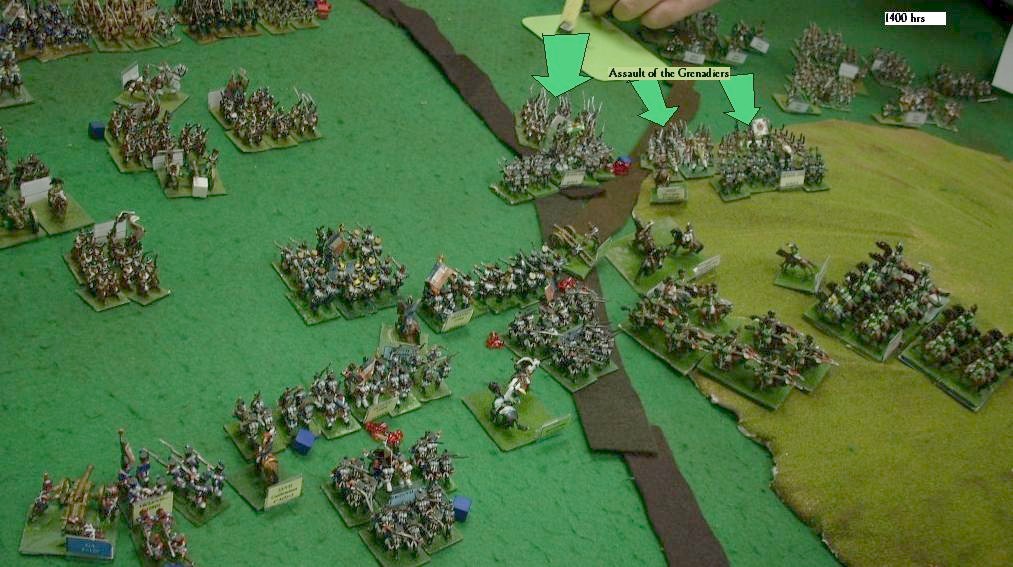
The French win a good many fights against Buxhowden but the numbers of Russians are just too great and they are obliged to fall back with heavy casualties. One saving grace for Ney is that the Russians in this part of the battlefield have no cavalry support.
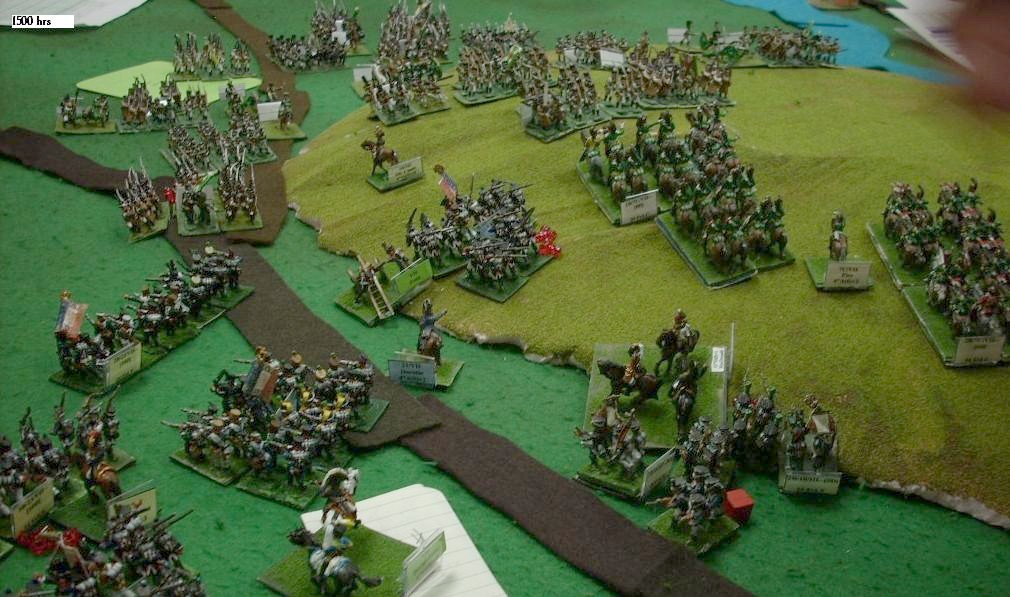
The Prussian Corps is shattered! The French left will require several hours to reorganize themselves and are in no position to shift to aid the right flank, but they have dealt a decisive blow to the army of Yorck.
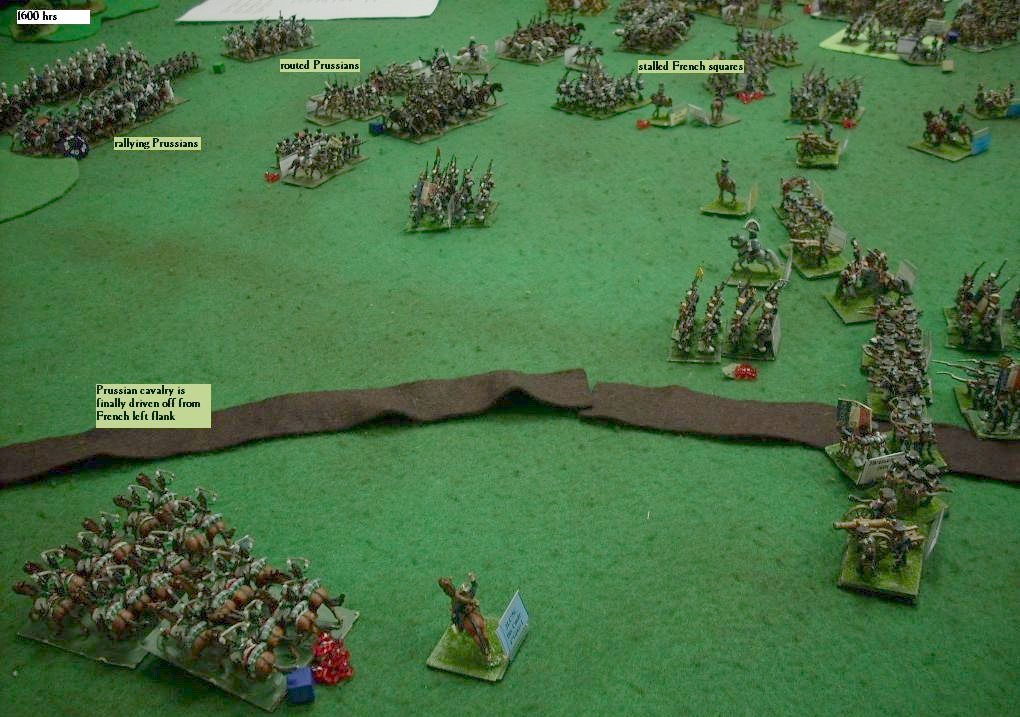
Quite thin, the French right still holds. The attack of the Russians is slow but, like the sea, it is relentless. Darkness saves Bernadotte.
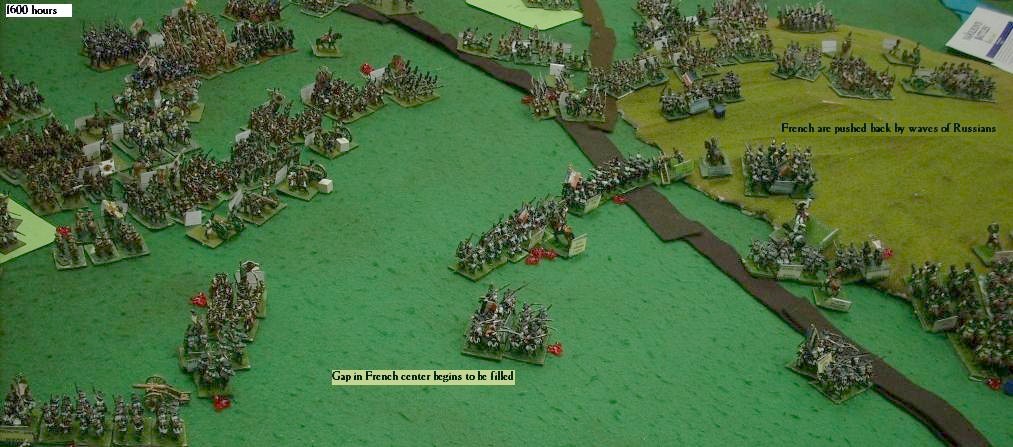
Although Napoleon would claim the battle as a victory, he would order his forces to withdraw in the night. Ney would march for Dennewitz and Bernadotte back to Eilenberg. He did not know what other troops were near for the allies and, as Ney might remind him, Berlin was left nearly undefended in the north. Blucher might appear there at any time.
Estimated Allied casualties: 12,000 infantry,
3,500 cavalry (nearly all Prussian)
Estimated French casualties: 13,000 infantry, 1000 cavalry